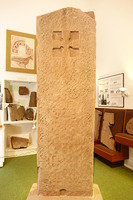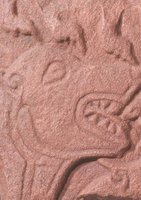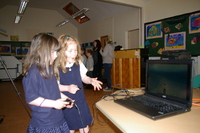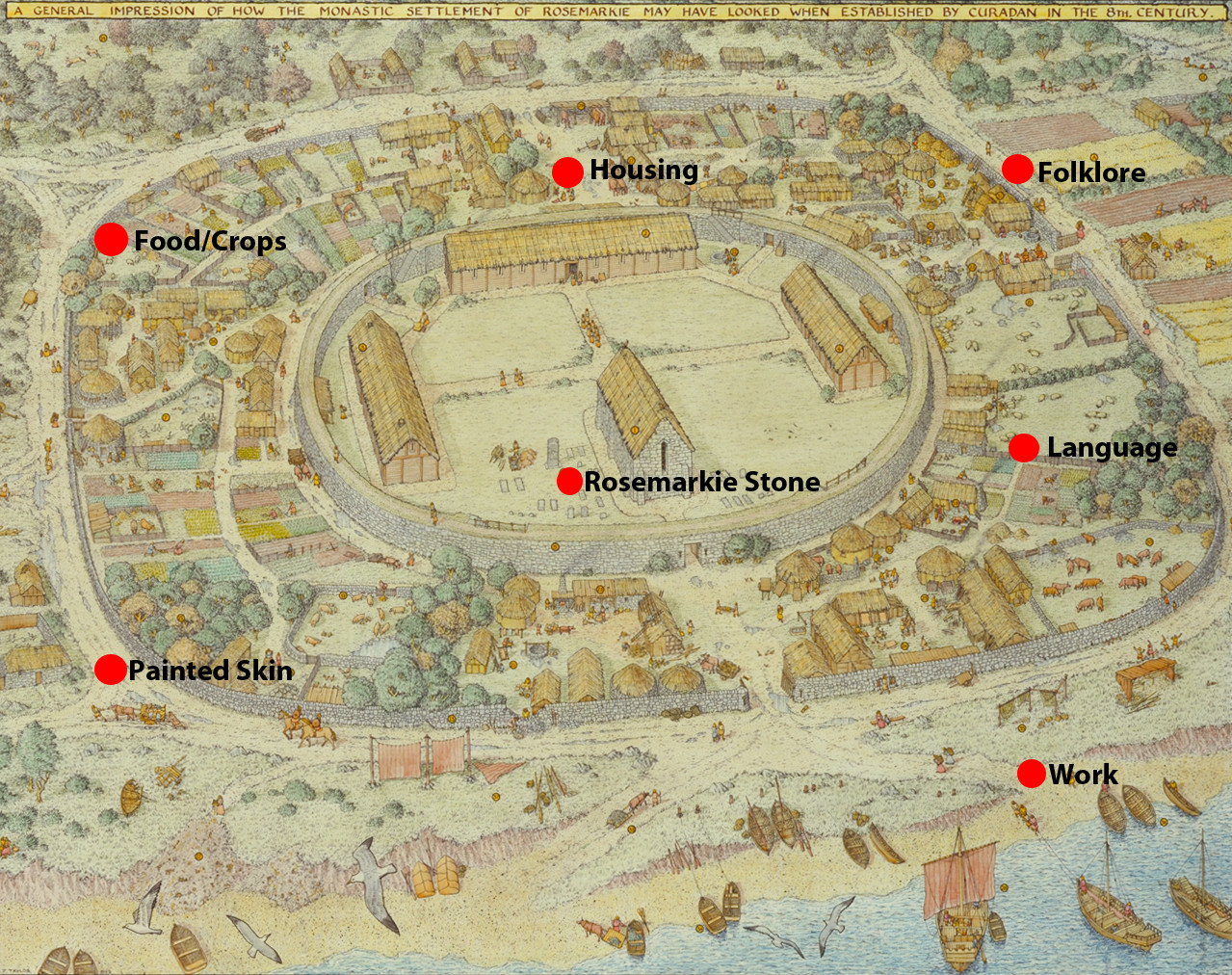Title
Embed
Copy the code below into your web page
Image Map
Work
 | The Picts would have travelled by land and sea. As well as being skilled stone masons the Pictish people would have had to work together building housing, growing crops, tending livestock, hunting, weaving, making tools and clothing, carving boats and canoes. |
Rosemarkie Popup
 | The original location of the Rosemarkie Stone was most likely within a Pictish settlement or monastery, it later was used as a floor slab in Rosemarkie Church and also stood in the Churchyard, before being moved and preserved within Groam House Museum.
|
Food
 | Archaeological excavations have shown that Pictish settlements contained sheep, cattle and pigs. They also grew crops such as barley and oats. Depictions in the stone carvings show scenes of hunting wild animals and fishing. |
Folk Lore
David MacRitchie, a Scottish folklorist (1851-1925), argued that fairies were based on a real diminutive or pygmy-statured population that lived in Scotland during the late Stone Age: "Postulations based on the premise that fairies constitute a folk memory of former races, conquered peoples who were pushed out beyond the periphery of settled areas, have fuelled the imagination of many scholars on this subject. Of particular significance was a theory advanced by David MacRitchie that fairies were an actual race of small or 'little' people, the original Pictish peoples of Scotland." |
St Kilda Children IMGP7095.JPG
 | Children at St Kilda enjoying and learning virtual expirience |


